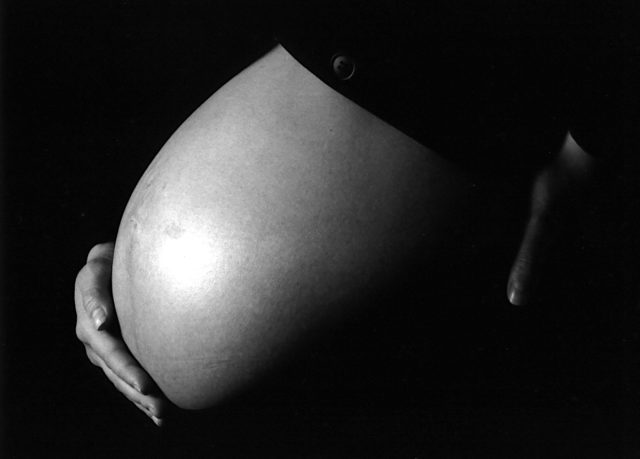

Public school teachers in Oklahoma usually receive about six weeks of unpaid maternity leave after they give birth. Then these educators have to figure out care plans for their newborns and head back into the classroom.
“You’re using your sick leave,” Oklahoma Education Association president Katherine Bishop said. “If you don’t have enough sick leave and your district has a sick-leave bank or sick-leave sharing, you can go to that, but it’s unpaid. I do not know how mothers come back in six weeks and keep their eyes open.”
SB 703, introduced this legislative session by Senate Education Committee Chairman Adam Pugh (R-Edmond), would provide all full-time public school employees in the state with 12 weeks of paid maternity leave. However, opponents and proponents of the measure alike have brought up the fiscal impact of the measure and the ongoing shortage of teachers and substitutes in the state as potential barriers to bringing the plan to life.
Exact numbers are difficult to determine, but Pugh said the bill would have an estimated fiscal impact of about $27 million a year.
“I see every teacher jumping for joy,” Bishop said. “I see central office people saying, ‘How are we going to make this work?’ But that’s what we do well in education.”
Sen. Carri Hicks (D-OKC) is a mother of three who worked as a teacher prior to being elected in 2018. During a Feb. 8 Senate Education Committee meeting, during which the bill advanced on a 12-1 vote, Hicks touched on her experience with maternity leave after giving birth to her third child.
“I had four weeks of leave and returned to the classroom before I was even medically released,” Hicks said during the meeting. “I think that’s a pretty common story in Oklahoma.”
Hicks said she is 100 percent on board with the intent of the bill, but she believes there would be complications resulting from teacher absences and interruptions in the instruction being delivered to students.
“Teachers are in it for their students,” Hicks said during the meeting. “Looking at potentially being gone for a third of an academic year — that’s a lot of time. I think we also need to consider what initiatives we’re following up with as far as the substitute pipeline.”
Rep. Trish Ranson (D-Stillwater) taught elementary-level music for 15 years. She had her children when she lived in Connecticut and worked in a private sector career outside the education sphere, and at that time she received 12 weeks of paid maternity leave. Ranson said she thinks SB 703 is a step in the right direction for the career field.
“I think it would revolutionize the teaching workforce,” Ranson said. “To know that you had 12 weeks to take care of your child, that’s big.”
‘That really impacts and affects our students growth’

Bishop agreed that finding people to cover classes while teachers are on leave is a common concern. However, she said the lack of paid maternity leave creates a barrier for early-career teachers and support professionals.
Ranson said time away can be difficult since a lot of teachers are required to write lesson plans for the time they’re away and have to check in with their substitutes weekly to make sure everything is running smoothly.
“Hopefully, you have a long-term sub, but often times you don’t,” Ranson said. “You’re making sure the materials they need are there. You’re working with your team members and making sure your substitute has contacts and back-up. It’s not really leave. But it is leave in the sense of spending time with your child and getting that bond. That’s the long-term effect. Having that bond with your child.”
Katherine Boydston, who has been teaching English at Duncan High School for the past eight and a half years, said the only real difficulty she had returning to her classroom after giving birth to her daughter in 2018 was emotional.
“It was difficult leaving Rose, but fortunately she stayed with family, so it wasn’t as bad as some people’s experiences,” Boydston said.
Boydston said she planned to use accumulated personal and sick days to be out from October through Christmas break. However, her daughter’s early arrival left her thinking her pay would be docked for a week or two. Boydston believes her fellow teacher transferring their leave time kept her pay from being deducted.
“I ended up being out from late September through Christmas Break,” Boydston said. “I’ve always believed that some of my co-workers gave me some of their time so that I could stay out that long, but no one’s ever confirmed those suspicions.”
Before going on maternity leave, Boydston prepared her lesson units for a long-term substitute, but she had some complications with her sub.
“My co-teachers really stepped up for me while I was away,” she said.
Hicks also ended up having complications with her long-term substitute after the birth of her third child.
“It was incredibly disappointing in that third pregnancy when I had my long-term substitute who was certified, who could handle the task, who had taught math for many years, and I felt was going to do an incredible job for my students. She lasted two days,” Hicks said. “At that point, I was healing from giving birth, and I knew my classroom was in chaos because they were scrambling to find a warm body to cover the class. That really impacts and affects our students’ growth.”
‘Take care of their own family as well’
Bishop said she thinks current staffing challenges make it hard to see the bigger picture when it comes to maternity leave.
“Our teachers and educators are the ones in our classrooms and school buildings taking care of our babies, and we need to make sure that they have time to take care of their own family as well,” Bishop said. “Right now is a really difficult time, so it’s hard to think outside the box with a teacher shortage and a substitute shortage. But when we talk about not being able to recruit, attract and retain educators in the profession, this is one roadblock that they see.”
During the Feb. 8 committee meeting, Hicks also argued that paid maternity leave could have a positive effect on infant mortality rates in the state.
“I think this is an incredible way to prioritize the experience of giving birth,” Hicks said. “We know that our infant and maternal mortality rates are horrendous. Having more paid timed leave at home with the child and family to bond is a very effective way to lower those rates.”
Last session, Hicks carried a bill, SB 121, to require district-level boards of education to adopt a policy giving lactating school employees paid breaks to pump breast milk. Bishop said the fact that legislation is required to address even such seemingly small issues affecting new mothers can be demoralizing for a workforce that is mostly made up of women.
“What if we did give that 12 weeks?,” Bishop hypothesized. “Our educators will be much more prepared. Just being able to stay awake. Just to be able to come back into the classroom after having time to have their baby, bond with their baby and recover from delivery. All of those (are) things we want to do to make sure every child has a healthy first 12 weeks of their lives.”




















